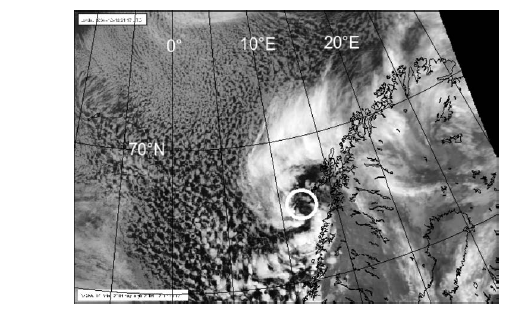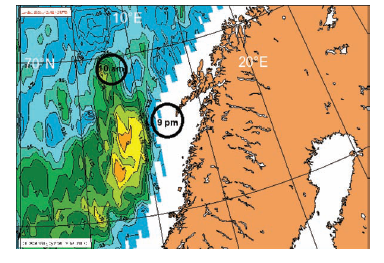
|
| Home -> STARS | |
|
HOME STARS Background Project Tasks Project team Links/References Publications wiki-internal DokIT-internal STARS Data-set Polar Low Cases Related Webpages Contact |
Sea Surface Temperature and Altimeter Synergy for Improved Forecasting of Polar Lows (STARS)STARS (Sea Surface Temperature and Altimeter Synergy for Improved Forecasting of Polar Lows) is a project funded by the European Space Agency (ESA) that aims at investigate the interaction between the atmosphere and ocean during intense polar low events. Polar lows are small scale cyclones that forms at high latitudes wintertime when extremely cold air from land or ice covered areas suddenly are exposed to the much warmer ocean surface. Wind speeds may sometimes reach hurricane force. Due to their small scale and the very sparse observational network in the Arctic they are difficult to forecast. In some cases the satellite images of polar lows have remarkable similarities with tropical cyclones, such as clear eye surrounded by spiral bands and are sometimes referred to as Arctic Hurricanes. Recent findings indicate that polar lows may sometimes interact with the ocean to increase the sea surface temperature (SST). When the North Atlantic Current meets the colder and less saline Arctic water masses the current sometimes sub-ducts and forms a warm core of water under the sea surface. Some observations from microwave satellite images indicates that the surface temperature raised with more than one degree during a polar low event near Northern Norway. Such a rapid surface warming may act as a positive feedback on the polar low by increasing the amount of energy that can be extracted from the ocean. In STARS, an extensive satellite and in-situ data set will be gathered and used to investigate a large number of polar low events to see if the type of atmosphere-ocean interaction mentioned above can be an important mechanism for polar lows in the Nordic Seas. |
| Updated March 5. 2013 Editor Yvonne Gusdal | |

|

